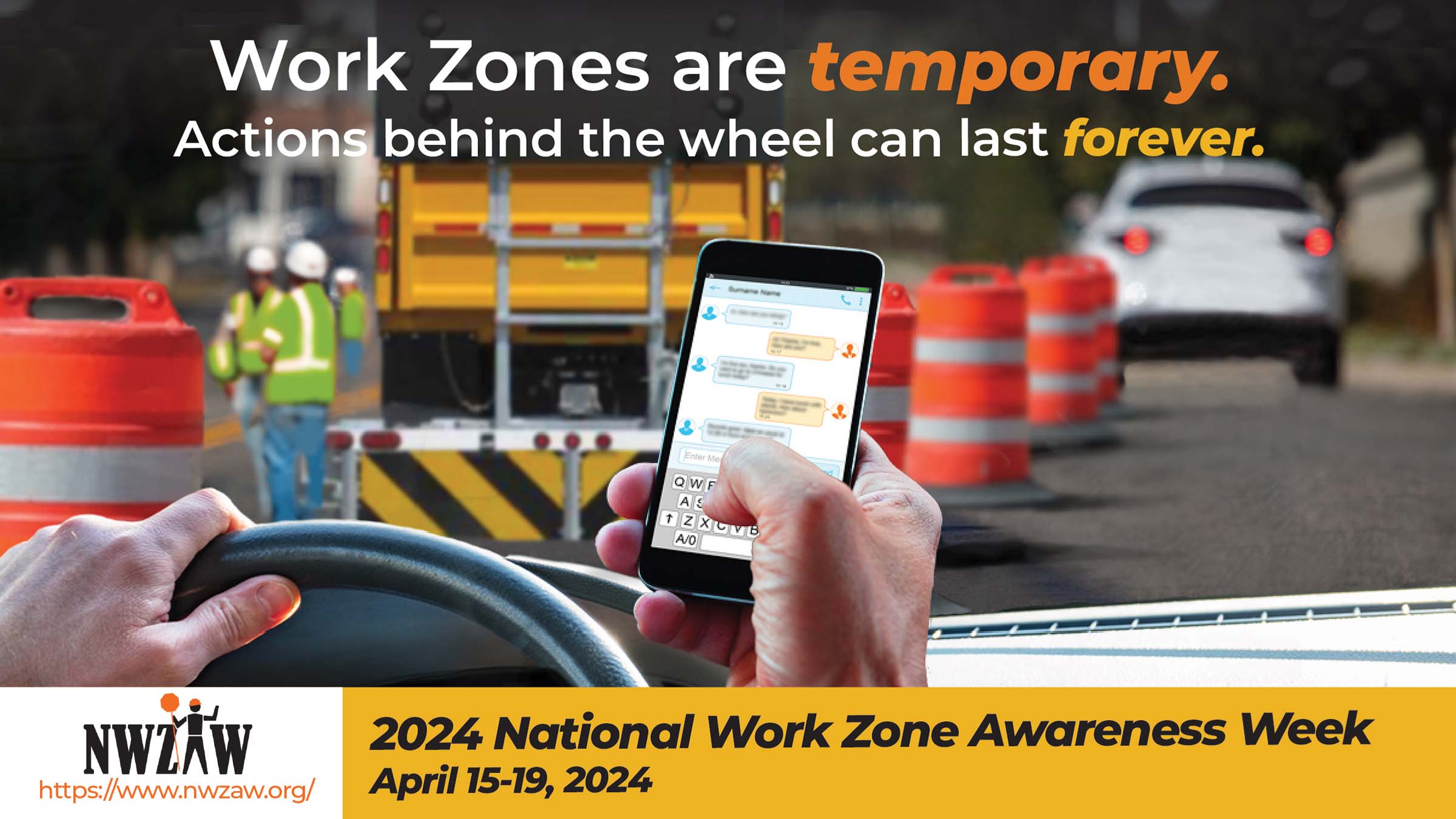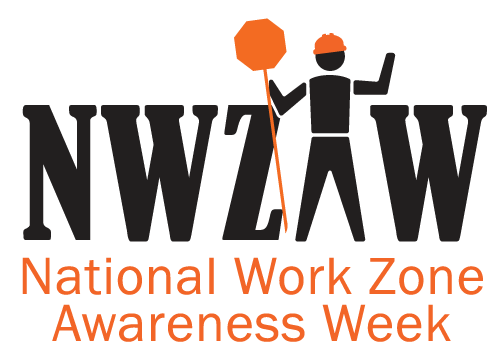As states, counties, and cities gear up for a busy construction and road maintenance season, National Work Zone Awareness Week is a great time to remember the importance of staying alert and safe in work zones. Every cone, every sign, and every worker matters.
We can work together to make sure everyone gets home safely by following a few simple guidelines.
STAY FOCUSED. Be alert for changes in traffic patterns and road conditions. Keep your eyes on the road and avoid all distractions such as cell phone use, eating, playing with the radio, or engaging with other passengers.
BE AWARE OF SIGNAGE. Work zones often have temporary signage to indicate lane closures, detours, and other important information. Be ready to look for and follow these signs to avoid a crash or backed-up traffic.
OBEY THE SPEED LIMIT. Speed limits are often reduced in work zones to keep workers safe and account for narrow lanes. Slow down and follow the speed limit. This will allow you to see workers ahead and give you extra time to stop quickly.
KEEP UP WITH TRAFFIC FLOW. Work zones can often be congested and time consuming, causing frustration for drivers. By keeping up with traffic and focusing on the road instead of the construction, drivers will improve the overall efficiency of the work zone.
RESPECT WORKERS. Work zones can be hazardous for both crew members and drivers. Follow work zone crews’ instructions to ensure a safe environment for everyone. Be on the lookout for hand signals, signs, and other devices as traffic is directed through the work zone.
PLAN AHEAD AND LEAVE EARLY. Work zones often cause delays, so leaving early can help you avoid being late or rushing through a work zone. With the extra time, drivers can remain calm and focused in these situations and avoid making dangerous or impulsive decisions.
BE PATIENT. Work zones are not there to intentionally interfere with your route. Remember that crews are there to help improve the roads and infrastructure in your communities, not hinder them.
LEAVE ROOM FOR LARGER VEHICLES. Large vehicles are disproportionality involved in fatal work zone crashes. Work zones are more difficult for larger trucks and buses to navigate through. Keep your distance, go slow, and never cut off a bus or truck.
KEEP A SAFE DISTANCE. Rear-end crashes are common in work zones. Pay attention to the car in front of you. If you cannot see the bottom of the tires of the car in front of you touching the ground, you are too close!
For more information go to the official NWZAW website.


